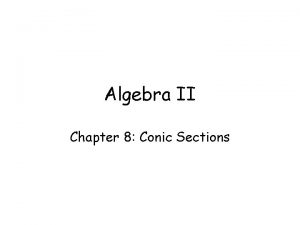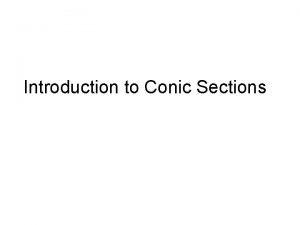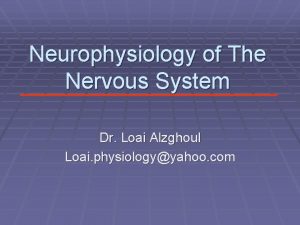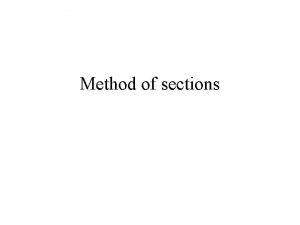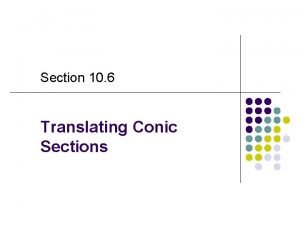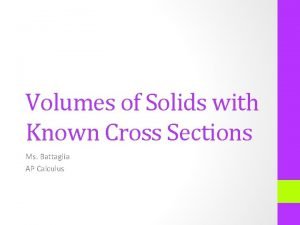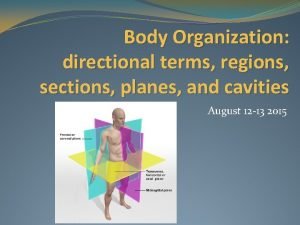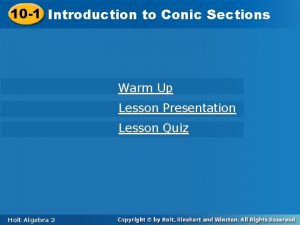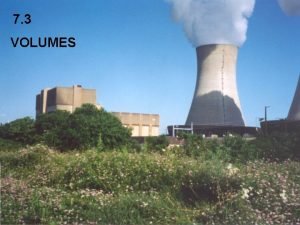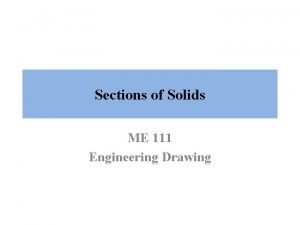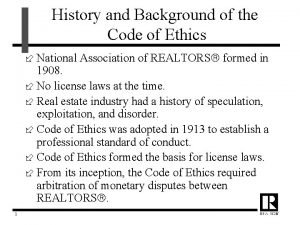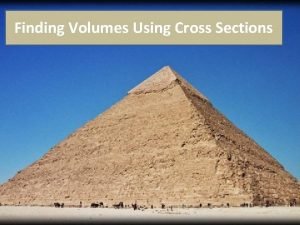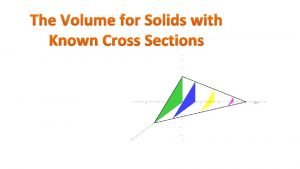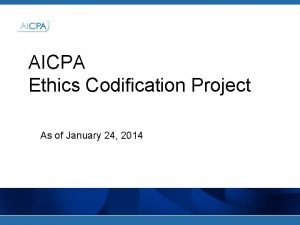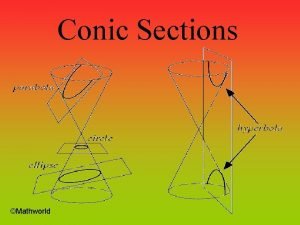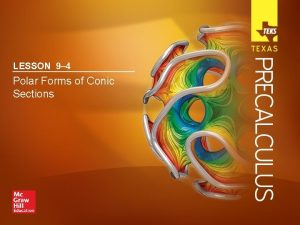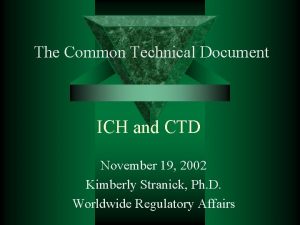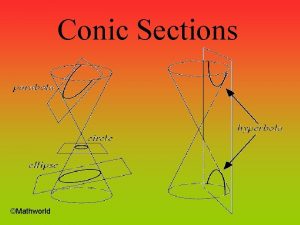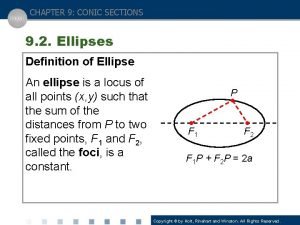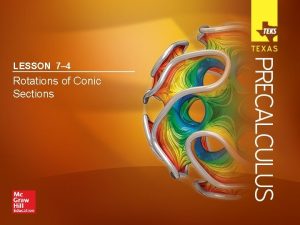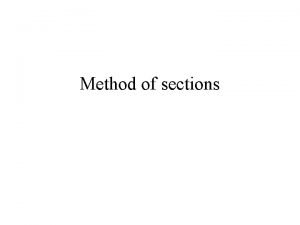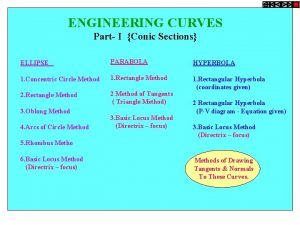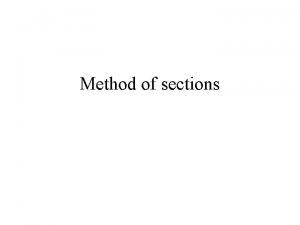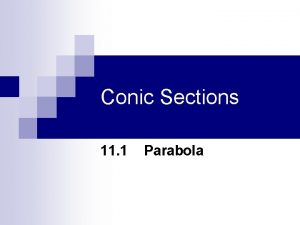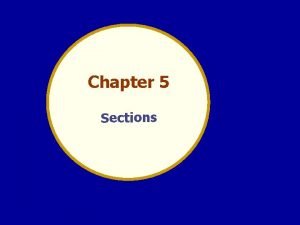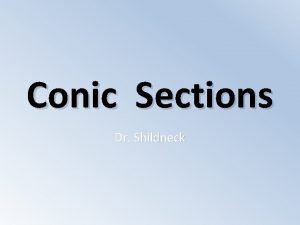Tutorial 3 Sections 009010 TA Greydon Gilmore Physiology














































- Slides: 46


Tutorial 3 Sections 009/010 TA: Greydon Gilmore Physiology 2130 Sep 23 rd, 2019

Your TA reminding you… • 1 st Peerwise assignment (1. 5%) • Post 2 MC questions: due Oct 16 th @ midnight • Answer 5 MC questions: due Oct 18 th @ midnight • Currently 47 inactive users • Only 10 students completed • 1 st Quiz (1%) • Opens: Oct 21 st @ 4 pm • Closes: Oct 22 nd @ 4 pm • 1 st Midterm - Oct 25 th @ 6 pm-7 pm (15%)

Today • Learning Catalytics Quiz • Group work • Osmolarity and tonicity • Action potential

Group Work

Activity #1: Labelling the Action Potential • One VG Na+ and one VG K+ • Place appropriate channel on: • 4, 6, 8 and 1/9 • Indicate if gates are open/closed: draw the gates • Take a picture and each group member needs to upload to learning catalytics site

4 Channel Diagrams – label gate configurations for the Na+ voltage-gated channel and the K+ voltage-gated channel and position on the action potential diagram

Activity #1: Answers

Activity #2: Ordering the events of a chemical synapse • Login to the Pearson Mastering site https: //www. pearsonmylabandmastering. com/northamerica/ • Order the events that occur at the chemical synapse • If two events occur at same time, then stack them • Every group member should submit their own, but work as a group to solve

Learning Activity Excitable Cell Answer

Review Questions

Which of the following statements are TRUE regarding osmosis? 1. The osmotic pressure of a solution is proportional to the concentration of the solute 2. A 100 m. M Na. Cl solution has a greater osmolarity than a 100 m. M Li. Cl solution because Na is larger than Li 3. The permeability of the membrane affects osmosis 4. Osmosis is the movement of a solute down its concentration gradient A) B) C) D) E) If only 1, 2 and 3 are correct If only 1 and 3 are correct If only 2 and 4 are correct If only 4 is correct If ALL are correct

Which of the following statements are TRUE regarding osmosis? 1. The osmotic pressure of a solution is proportional to the concentration of the solute 2. A 100 m. M Na. Cl solution has a greater osmolarity than a 100 m. M Li. Cl solution because Na is larger than Li 3. The permeability of the membrane affects osmosis 4. Osmosis is the movement of a solute down its concentration gradient A) B) C) D) E) If only 1, 2 and 3 are correct If only 1 and 3 are correct If only 2 and 4 are correct If only 4 is correct If ALL are correct

Which of the following statements regarding the cell’s membrane potential is TRUE? 1. 2. 3. 4. Only neurons have a membrane potential When an electrochemical equilibrium is reached (i. e. the electrical gradient force of an ion is equal in magnitude to its chemical gradient force), there is no movement of this ion across the membrane The RMP is generated by the Na/K pump It is affected by the concentration gradient of ions and the membrane permeability A) B) C) D) E) If only 1, 2 and 3 are correct If only 1 and 3 are correct If only 2 and 4 are correct If only 4 is correct If ALL are correct

Which of the following statements regarding the cell’s membrane potential is TRUE? 1. 2. 3. 4. Only neurons have a membrane potential When an electrochemical equilibrium is reached (i. e. the electrical gradient force of an ion is equal in magnitude to its chemical gradient force), there is no movement of this ion across the membrane The RMP is generated by the Na/K pump It is affected by the concentration gradient of ions and the membrane permeability A) B) C) D) E) If only 1, 2 and 3 are correct If only 1 and 3 are correct If only 2 and 4 are correct If only 4 is correct If ALL are correct

Which of the following cells are excitable? 1. 2. 3. 4. Neurons Cardiac Muscle Cells Smooth Muscle Cells Skeletal Muscle Cells A) B) C) D) E) If only 1, 2 and 3 are correct If only 1 and 3 are correct If only 2 and 4 are correct If only 4 is correct If ALL are correct

Which of the following cells are excitable? 1. 2. 3. 4. Neurons Cardiac Muscle Cells Smooth Muscle Cells Skeletal Muscle Cells A) B) C) D) E) If only 1, 2 and 3 are correct If only 1 and 3 are correct If only 2 and 4 are correct If only 4 is correct If ALL are correct Excitable Cells: - Generate and respond to electrical signals - Include neurons and muscle cells

Learning Catalytic Question

Osmosis, tonicity and the resting membrane potential Chapter 1: Dr. Woods pp.

Osmosis • Osmosis is the net movement of WATER down its concentration gradient • It is affected by: 1) permeability of the membrane 2) concentration gradient of solutes 3) pressure gradient across the cell membrane • Osmolarity is concerned only with the NUMBER OF PARTICLES in solution (NOT size or type/composition)

Tonicity • Tonicity: the ability of a solution to cause osmosis across biological cell membranes • Isotonic: same osmolarity as body fluids • Hypotonic: lower osmolarity than body fluids • Hypertonic: higher osmolarity than body fluids • Chemical Gradient: molecules move from high concentration to low concentration • Electrical Gradient: electrically charged molecules (ions) move to areas of opposite charge

A red blood cell is placed in a 200 m. M Be. Cl 2 solution. The cell will _______ because the solution is _______. A) B) C) D) shrink; hypotonic shrink; hypertonic swell; hypotonic swell; hypertonic

A red blood cell is placed in a 200 m. M Be. Cl 2 solution. The cell will _______ because the solution is _______. A) B) C) D) shrink; hypotonic shrink; hypertonic swell; hypotonic swell; hypertonic RBC = 300 m. Osm Solution = 200 m. M x 3 ions = 600 m. Osm The solution is hypertonic Water moves out of cell into the solution, causing the cell to shrink

Tonicity: Review Less solute More solute

Compartment Question 200 m. M

Compartment Question 200 m. M = (200 m. M x 1 Ca 2+) + (200 m. M x 2 Cl-) = 600 m. Osm = 100 m. Osm

Terms you should know • Active transport: moves molecules against their concentration gradient and requires an outside source of energy • Extracellular fluid: body fluid compartment found outside of cells • Facilitated diffusion: a mediated-transport process that moves molecules from higher to lower concentrations across a membrane by means of a transporter until the two concentrations become equal. • Gap junctions: allow chemical and electrical signals to pass directly from cell to cell • Glycoprotein: protein with sugar groups attached • Homeostasis: the maintenance of a relatively constant internal environment • Hydrophobic: molecules that do not dissolve easily in water • Hypertonic: a fluid bathing a cell that would cause a cell to shrink • Interstitial fluid: extracellular fluid surrounding cells, excludes plasma • Paracrine: a chemical that is secreted and communicates locally with a neighbouring cell • Plasma: the liquid portion of blood, a component of extracellular fluid

The Action Potential Chapter 1: Dr. Woods pp.

Which of the following structures are correctly associated with their function? A) B) C) D) Dendrites send outgoing signals Myelin insulates axons to prevent ion/current leak There are no ion channels at the Nodes of Ranvier There are no organelles at the soma

Which of the following structures are correctly associated with their function? A) B) C) D) Dendrites send outgoing signals Myelin insulates axons to prevent ion/current leak There are no ion channels at the Nodes of Ranvier There are no organelles at the soma

The Neuron

Key Events and Their Locations 1. 2. 3. 4. Incoming information received by the dendrites Graded potentials occur in the dendrites/soma An action potential is fired at the axon hillock if threshold is met The action potential travels along the myelinated axon via salutatory conduction 5. The action potential arrives at the axon terminal of the pre-synaptic cell and the message is passed to the post-synaptic cell

What is a main difference between a graded potential and an action potential? A) Graded potentials do not experience current leak, whereas action potentials do B) Graded potentials travel a long distance, whereas action potentials travel a short distance C) Graded potentials occur at the soma, whereas action potentials start at the axon hillock D) The amplitude of the graded potentials is not proportional to the stimulus strength, whereas the amplitude of action potentials is proportional to the stimulus strength

What is a main difference between a graded potential and an action potential? A) Graded potentials do not experience current leak, whereas action potentials do B) Graded potentials travel a long distance, whereas action potentials travel a short distance C) Graded potentials occur at the soma, whereas action potentials start at the axon hillock D) The amplitude of the graded potentials is not proportional to the stimulus strength, whereas the amplitude of action potentials is proportional to the stimulus strength

Graded Potentials vs. Action Potentials Graded Potentials Action Potentials Occur at dendrites/somas Occur at axon hillock Caused by mechanical or chemical-gated channels Caused by voltage-gated channels Can be a depolarization or hyperpolarization Always a depolarization Amplitude of potential is directly proportional to stimulus strength All or nothing–Amplitude of potential is constant no matter the stimulus strength Travel short distances Travel long distances

Depolarization is caused by the opening of ____, causing ___ to flow ___ the cell. A) B) C) D) VG Na+ channels; Na+ ions; into VG Na+ channels; Na+ ions; out of VG K+ channels; K+ ions, into VG K+ channels; K+ ions, out of

Depolarization is caused by the opening of ____, causing ___ to flow ___ the cell. A) B) C) D) VG Na+ channels; Na+ ions; into VG Na+ channels; Na+ ions; out of VG K+ channels; K+ ions, into VG K+ channels; K+ ions, out of

The Action Potential Depolarization - Potential becomes more +ve - VG Na+ C open (fast) - Na+ flows into cell - VG K+ C start to open (slow) RMP - VG Na+ C close - VG K+ C fully closed Repolarization - Potential returns to RMP - VG Na+ C inactive - VG K+ C fully open - K+ flows out of cell Hyperpolarization - Potential becomes more –ve than RMP - VG Na+ C close - VG K+ C start to close (slow) Absolute Refractory Period

Propagation of The Action Potential Chapter 1: Dr. Woods pp.

Propagation of the AP • Myelin prevents ion/current leakage and allows for rapid saltatory conduction • Ion channels are concentrated at Nodes of Ranvier • The Na+ ions flow down the axon (like charges repels and opposites charges attract) • This brings the next segment of the axon to threshold an AP is fired

Propagation of the AP Initial stimulus @ soma Threshold is met @ axon hillock and AP is fired Depolarization (Na+ flows into the cell) Na+ flows along the axon That Na+ brings the next segment to threshold and AP is fired Depolarization of next segment (Na+ flows into the cell) Repolarization of initial segment (K+ flows out of the cell)

Which of the following events take place at a chemical synapse? 1. 2. 3. 4. VG Ca 2+ channels open, allowing Ca 2+ to flow out of the cell VG Ca 2+ channels open, allowing Ca 2+ to flow into the cell Neurotransmitters travel from the post-synaptic cell to the pre-synaptic cell Neurotransmitters travel from the pre-synaptic cell to the post-synaptic cell A) B) C) D) E) If only 1, 2 and 3 are correct If only 1 and 3 are correct If only 2 and 4 are correct If only 4 is correct If ALL are correct

Which of the following events take place at a chemical synapse? 1. 2. 3. 4. VG Ca 2+ channels open, allowing Ca 2+ to flow out of the cell VG Ca 2+ channels open, allowing Ca 2+ to flow into the cell Neurotransmitters travel from the post-synaptic cell to the pre-synaptic cell Neurotransmitters travel from the pre-synaptic cell to the post-synaptic cell A) B) C) D) E) If only 1, 2 and 3 are correct If only 1 and 3 are correct If only 2 and 4 are correct If only 4 is correct If ALL are correct

What happens to extra neurotransmitters? • Recycled into axon terminal • Degraded by enzymes • Diffuse out of cleft What happens to the post-synaptic cell? If Na+ channels open: EPSP • Na+ into cell • Depolarization of post-synaptic cell (graded potential towards threshold) If K+ or Cl- channels open: IPSP • K+ out of cell or Cl- into cell • Hyperpolarization of post-synaptic cell (graded potential away from threshold) Synapse

Next Tutorial (Sep • Sensory System • Nervous system overview • Touch th 30 )

What Questions Do You Have? You can ask in the Owl forums as well! Also anonymously ask questions in the online dropbox!!
 Lorna simpson
Lorna simpson Lorna simpson
Lorna simpson Brianna gilmore
Brianna gilmore Lorna simpson
Lorna simpson Gilmore and bell
Gilmore and bell Gilmore gu
Gilmore gu Parabola ellipse hyperbola cheat sheet
Parabola ellipse hyperbola cheat sheet Hyperbola
Hyperbola Chapter 5 lesson 4 declaring independence
Chapter 5 lesson 4 declaring independence Conic sections table
Conic sections table Sections 1-6 1-7 commission and graduated commission
Sections 1-6 1-7 commission and graduated commission Anatomy terms
Anatomy terms The 4 quarters of jerusalem
The 4 quarters of jerusalem Brain sections labeled
Brain sections labeled Lesson 1 exploring conic sections
Lesson 1 exploring conic sections Method of sections
Method of sections Health and safety at work etc act 1974 section 2
Health and safety at work etc act 1974 section 2 Translating conic sections
Translating conic sections Area of triangle formula
Area of triangle formula Body directional terms
Body directional terms Conic sections quiz
Conic sections quiz Volumes of solids with known cross sections calculator
Volumes of solids with known cross sections calculator Polar equation of conic
Polar equation of conic Sectioning of solids
Sectioning of solids Chapter 9 conic sections and analytic geometry
Chapter 9 conic sections and analytic geometry Code of ethics 3 major sections
Code of ethics 3 major sections Culinary maths
Culinary maths Volumes of solids with known cross sections
Volumes of solids with known cross sections Volumes of solids with known cross sections
Volumes of solids with known cross sections Aicpa ethics codification
Aicpa ethics codification 8 major levels of classification
8 major levels of classification Pga sections map
Pga sections map Real life application of conic sections
Real life application of conic sections Figure of reproductive system
Figure of reproductive system Simon rolls a number cube and picks a card
Simon rolls a number cube and picks a card 9-4 polar forms of conic sections
9-4 polar forms of conic sections How many sections are in the chapter handbook for tx hosa?
How many sections are in the chapter handbook for tx hosa? 11-1 space figures and cross sections
11-1 space figures and cross sections Ctd ich
Ctd ich Types of conic sections
Types of conic sections Eccentricity of ellipse meaning
Eccentricity of ellipse meaning Cross section slice
Cross section slice Rotating conic sections
Rotating conic sections Method of sections
Method of sections Realtor new member orientation
Realtor new member orientation Broken out section
Broken out section Is a cycloid a conic section
Is a cycloid a conic section






